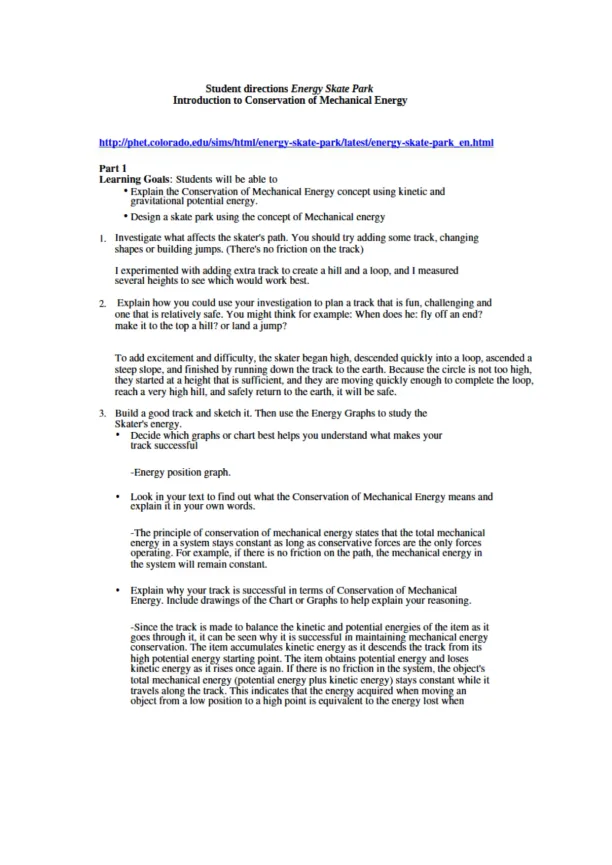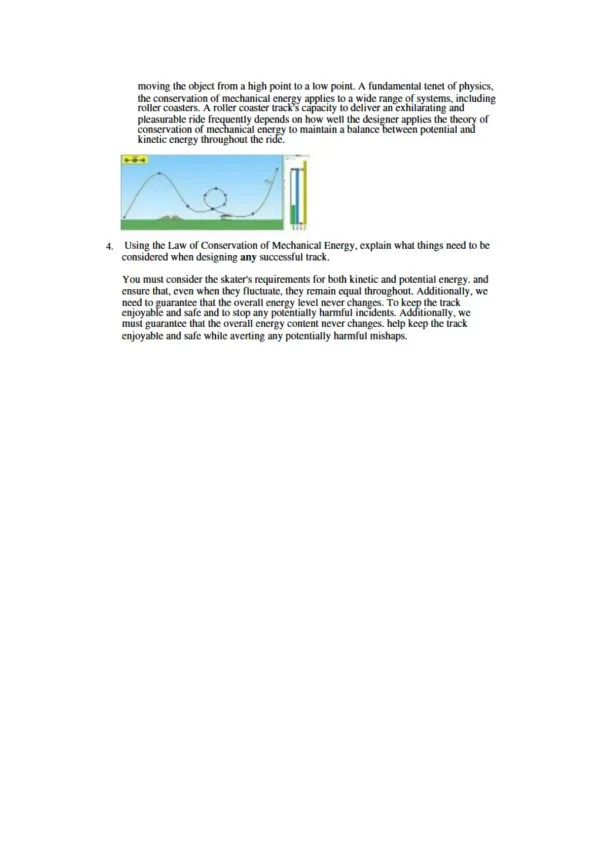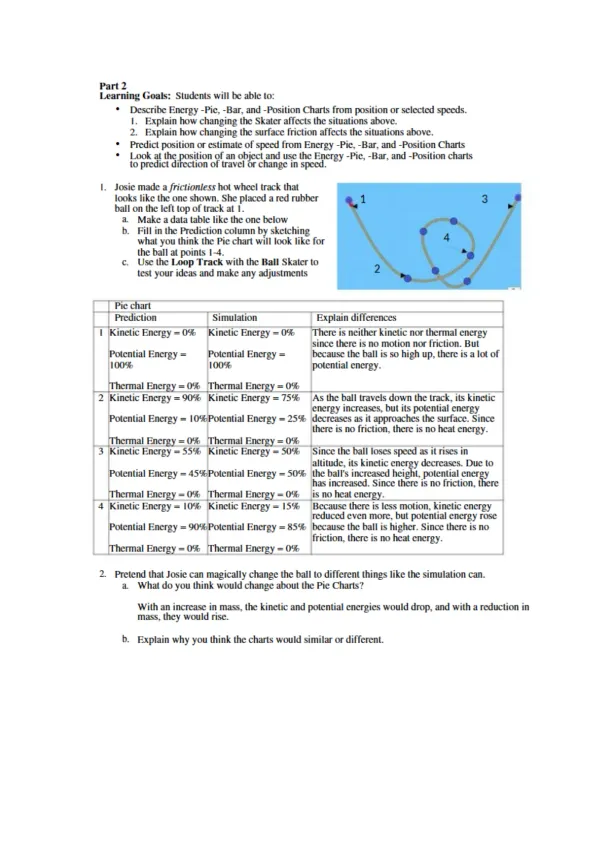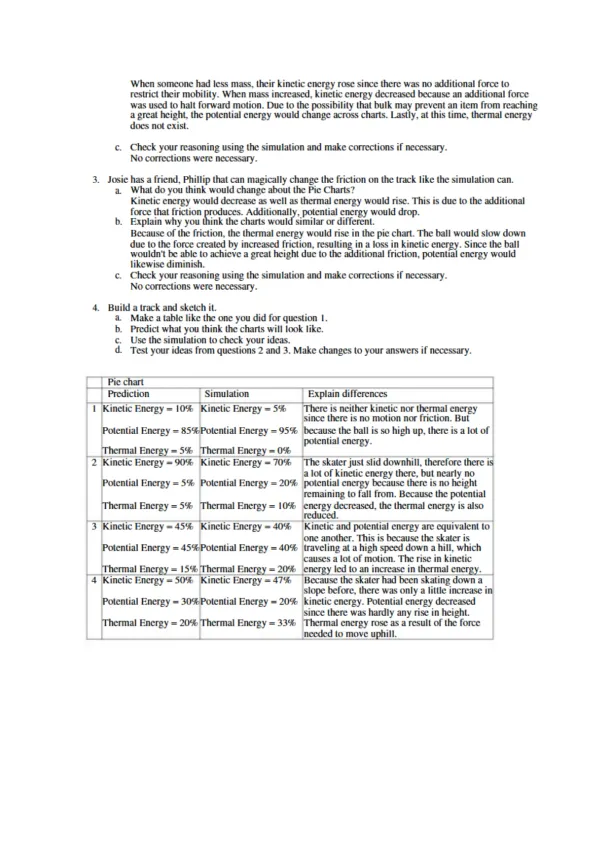Page 1

Loading page image...
Page 2

Loading page image...
Page 3

Loading page image...
Page 4

Loading page image...
Skate park design uses conservation of mechanical energy, where kinetic and potential energy convert without loss, ensuring the skater safely completes loops, jumps, and slopes on a frictionless track.
Loading page image...
Loading page image...
Loading page image...
Loading page image...
This document has 11 pages. Sign in to access the full document!